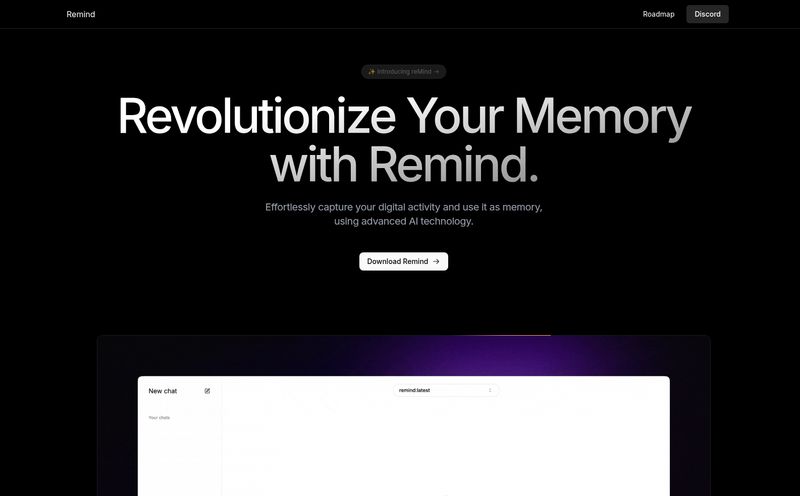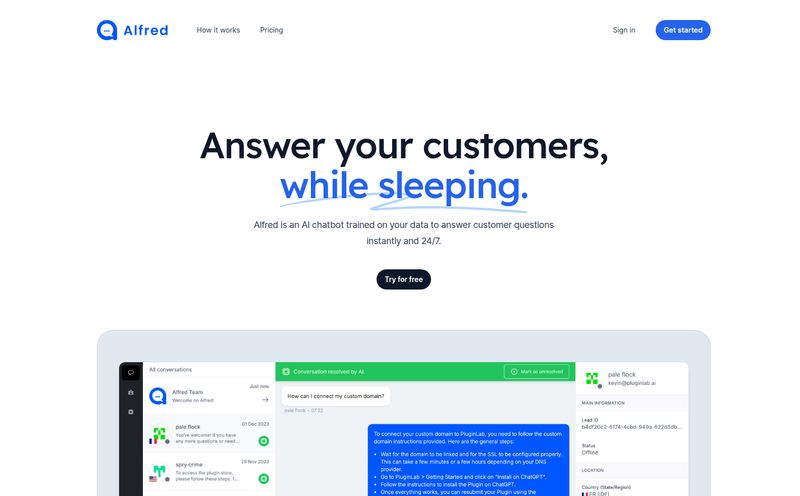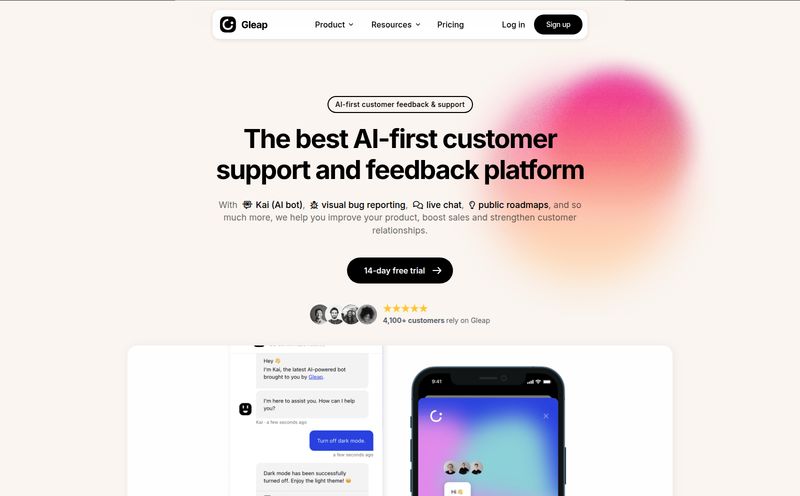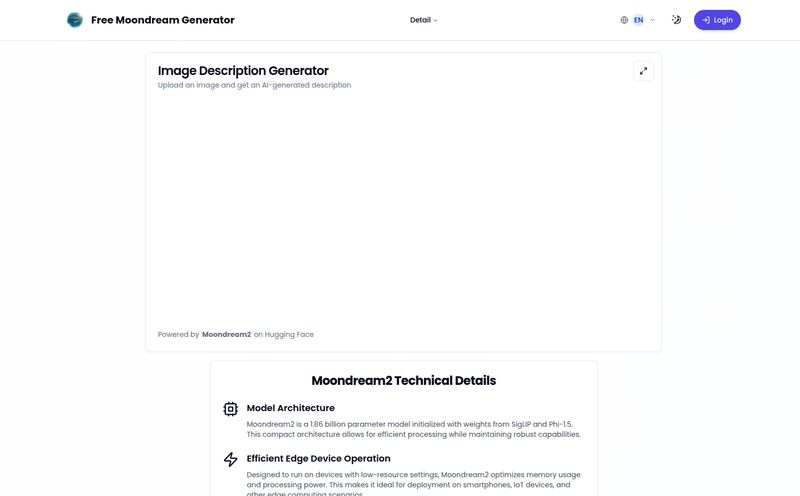Building applications with Large Language Models (LLMs) is kind of the Wild West right now. It’s exciting, sure, but it’s also a chaotic mess. You craft the perfect prompt, connect to an API, and... hope for the best. When it works, you’re a genius. When it fails, you’re staring into a digital abyss, a black box that just ate your tokens and spat out gibberish. Why was the output slow? Why did it hallucinate a purple elephant? Good luck figuring that out with a few `print()` statements.
I’ve spent years in the trenches of traffic generation and SEO, and I've watched countless tools promise to be the 'next big thing'. Most of them are just repackaged old ideas. But every so often, something comes along that genuinely makes you sit up and pay attention. For me, in the current AI gold rush, that something is Laminar.
Backed by the folks at Y Combinator, Laminar isn't just another logger. It’s an open-source platform designed specifically for the weird, wonderful, and often frustrating world of AI application development. It’s about bringing real observability—tracing, evaluation, and monitoring—to the AI stack. It’s like someone finally handed us a flashlight to use inside that black box.
So, What is Laminar, Really?
Imagine you're building a complex machine. You wouldn't just assemble the parts and flip the switch; you’d want to see how every gear turns, how every piston fires. That's what Laminar aims to do for your AI app. At its core, it's an open-source observability and evaluation platform. It helps you understand what's happening inside your complex async pipelines, from the moment a user sends a request to the final output and every step in between.
It’s built on a fast Rust backend (which gets a nod of approval from the performance geeks like me) and offers zero-latency-overhead logs. This means you can monitor your app without slowing it down—a critical detail for production environments. It's not just about watching for errors; it’s about understanding performance, cost, and quality in a way that just wasn’t easy before.
Think of it as a control panel for your AI. Instead of guessing, you’re seeing.
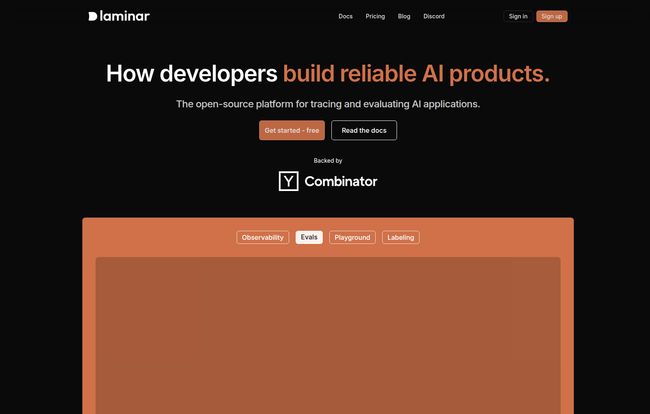
Visit Laminar
The Core Features That Actually Matter
A long feature list can be deceiving. What matters is what you'll actually use. After looking through their docs and playing around, a few things really stand out.
Automatic Tracing without the Headache
This is the big one for me. Manually instrumenting code for tracing is a tedious chore that nobody enjoys. Laminar integrates with popular frameworks like LangChain and LlamaIndex and automatically traces the execution flow. This means you get a detailed, step-by-step breakdown of your LLM calls, function executions, and data transformations with minimal code changes. It’s a massive time-saver and frankly, how it should have always been.
Real-Time Observability and the Browser Agent
Seeing a trace after the fact is useful. Seeing it in real-time as it happens? That’s a different level of power. You can watch the data flow through your system, pinpointing bottlenecks or weird behavior instantly. What’s even cooler is their browser agent observability. This lets you connect the dots all the way from a user's action in their browser to the backend AI logic and back again. Debugging the full picture, not just the server-side, is a huge win for building reliable products.
More Than Just Watching: Evals and Playgrounds
Observability is only half the battle. Your AI app can be running perfectly fast and still produce terrible results. This is where Laminar’s evaluation (or evals) tools come in. You can create datasets to test your prompts and models, ensuring the output quality is high and consistent. Is your bot staying on topic? Is the summary accurate? Evals help you answer these questions systematically. The built-in LLM playground also creates a tight feedback loop for prompt engineering and experimentation. Tweak a prompt, see the result, check the trace, and repeat. Much better than juggling a dozen browser tabs and a messy text file.
Why Open-Source is a Game Changer Here
I have a soft spot for open-source tools, and in the world of AI infrastructure, I think it’s particularly important. Sticking your most critical monitoring and evaluation logic into a proprietary, closed-source platform can feel a bit...risky. What if they go out of business? What if they triple their prices?
With Laminar, you have the option to self-host. This gives you complete control over your data, your infrastructure, and your destiny. There’s no vendor lock-in. You can inspect the code, understand how it works, and even contribute back to it. For startups and teams that value transparency and control, this is a massive advantage.
Laminar Pricing: Let's Talk Money
Alright, the all-important question: what’s this going to cost? The beauty of a tool like this is that you can start for free. Their pricing model seems fair and designed to scale with you. Based on their pricing page, it looks like they've shifted to a data-based model, which is pretty common for observability tools.
| Plan | Price | Key Features |
|---|---|---|
| Free | $0 / month | 1GB data/month, 15 day retention, 1 team member, Community support |
| Hobby | $25 / month | 2GB data/month included, 30 day retention, 2 team members, Priority email support |
| Pro | $50 / month | 5GB data/month included, 90 day retention, 3+ team members, Private Slack channel |
| Enterprise | Custom | Custom data/retention/members, On-premise deployment, Dedicated support |
The Free tier is genuinely useful for getting your feet wet or for a personal project. The Hobby plan seems perfect for a small startup or a more serious side-project, and the Pro plan is for when things are getting real. And of course, the self-hosted open-source version is always an option if you're willing to manage it yourself.
The Good, The Bad, and The Realistic
No tool is perfect. Let’s get down to the brass tacks.
What I Love
The combination of open-source, automatic tracing, and integrated evals is the killer combo. It’s not just one feature, it's the cohesive way they work together. It feels like a platform that was designed with the actual AI development workflow in mind, not just a bunch of features bolted together. The testimonials from folks like Michael Ettinger saying the “tracing is genuinely great” seem to hold up. It solves a real, tangible problem without a ton of ceremony.
Potential Hurdles
On the flip side, if you go the self-hosted route, you'll need some technical chops. This isn’t a one-click install for your grandma. You'll need to be comfortable with deployment and maintenance. Also, like any platform with usage-based pricing, you’ll want to keep an eye on your data consumption on the paid tiers so you dont get any suprise bills. And for the free tier, you're relying on community support, which can be great, but it's not the same as having a dedicated support channel when you're in a jam.
Who is Laminar For? (And Who It Might Not Be For)
I see Laminar as a perfect fit for AI-native startups and development teams who are serious about building reliable, high-quality products. If you're tired of flying blind and want to move from 'I think it works' to 'I can prove it works', this is for you. It’s for the developer who values iteration, data, and having the right tool for the job.
Who isn't it for? If you're just building a simple script that calls the OpenAI API once, this is probably overkill. Also, large enterprises with deeply entrenched, custom-built observability solutions might find it hard to switch, though the Enterprise plan is clearly aimed at winning them over.
Final Thoughts: Is Laminar Worth It?
In a world overflowing with AI hype, Laminar feels refreshingly practical. It’s not selling a dream; it’s selling a better way to work. It’s a well-designed, developer-first tool that tackles the very unsexy but very real problems of building, deploying, and monitoring AI applications.
For me, the answer is a resounding yes. It’s worth it. The ability to start for free, the power of its features, and the safety net of being open-source make it a very compelling choice. It’s a tool that can grow with you from a weekend hackathon to a full-blown production system. And in this fast-moving space, that kind of flexibility is worth its weight in gold.
Frequently Asked Questions (FAQ)
What exactly is a 'span' in Laminar?
A span represents a single unit of work or an operation within a trace. Think of it as one step in a larger process. For example, an LLM call, a database query, or a function execution would each be a span. A collection of spans that shows an entire request from start to finish is called a trace.
How does Laminar's automatic tracing work?
Laminar uses libraries that 'patch' or 'instrument' popular AI frameworks like LangChain, LlamaIndex, and OpenAI's SDK. When you call a function from one of these libraries, Laminar's code intercepts it, records the important data (inputs, outputs, time taken), and then lets the original function proceed. It's a clever way to add tracing without you needing to manually add logging code everywhere.
Can I self-host Laminar?
Yes, absolutely. Laminar is open-source, and you can find instructions on their GitHub to deploy it on your own infrastructure. This is ideal for those who have strict data privacy requirements or want maximum control.
Is the free plan good enough to get started?
Definitely. The free tier offers 1GB of data per month and 15 days of data retention. That's more than enough for developing a new application, running experiments, or managing a small-scale personal project. It gives you full access to the core tracing and observability features so you can see if it's right for you.
How is Laminar different from a tool like LangSmith?
While both are in the LLM observability space, they have different focuses. LangSmith is tightly integrated with the LangChain ecosystem. Laminar is more framework-agnostic, aiming to be a universal observability platform for any AI stack. Laminar also has features like the browser agent for end-to-end user session tracing, which gives it a broader scope beyond just the backend LLM chain.
How is data usage calculated on the new pricing plans?
Based on their pricing page, data usage is calculated by the gigabytes (GB) of data you send to Laminar each month. This includes the data within your traces and spans—things like inputs, outputs, metadata, etc. The pricing calculator on their site can help you estimate your costs based on token count.
